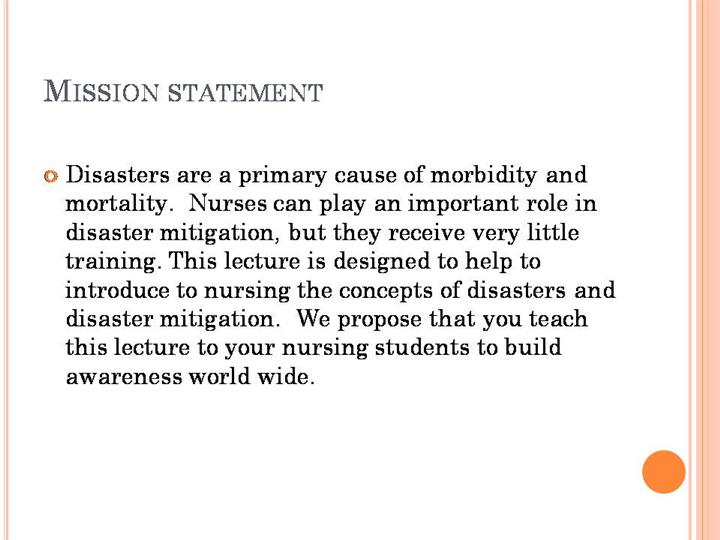| front |1 |2 |3 |4 |5 |6 |7 |8 |9 |10 |11 |12 |13 |14 |15 |16 |17 |18 |19 |20 |21 |22 |23 |24 |25 |26 |27 |28 |29 |30 |31 |32 |33 |34 |35|36 |37 |38 |39 |40 |41 |42 |43 |44 |45 |46 |47 |48 |49 |50 |51 |52 |53 |review |
 |
Over the past few decades, disasters have been on the rise. Millions of people have been affected, lost homes and family members, or displaced. No one is immune against disasters. However, what makes a difference is the degree of preparedness. Nurses are the largest health care professional group, yet, they are not well prepared for disasters. Disasters pose threats to physical as well psychosocial wellbeing. Nurses view health as a state of physical and psychosocial wellbeing. In this context nurses who receive disaster training can contribute significantly in disaster mitigation both at ground zero and throughout the country. This lecture intends to provide basic information on disasters and describe nurses’ roles in disaster management on the three levels of prevention.
There are millions of nurses, and many thousands of nursing schools that teach nothing on disasters –especially in places exposed to continuous natural disasters. The teachers at these countries are in need for teaching material on disaster management. A Nursing Supercourse will empower faculty members and instructors at nursing schools world wide by providing them with state of art ready to teach lectures on disaster management.
|